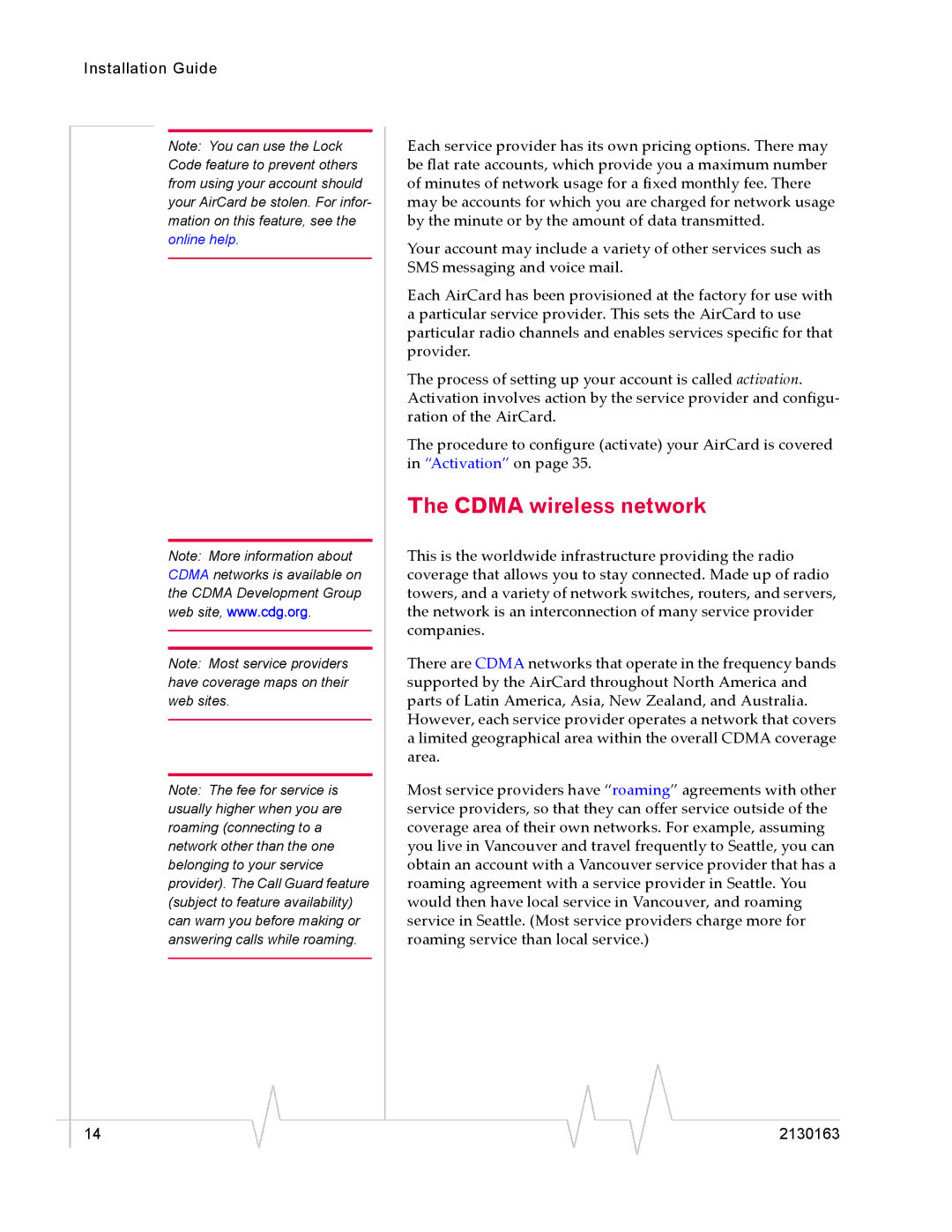
Installation Guide
Note: You can use the Lock Code feature to prevent others from using your account should your AirCard be stolen. For infor- mation on this feature, see the online help.
Note: More information about CDMA networks is available on the CDMA Development Group web site, www.cdg.org.
Note: Most service providers have coverage maps on their web sites.
Note: The fee for service is usually higher when you are roaming (connecting to a network other than the one belonging to your service provider). The Call Guard feature (subject to feature availability) can warn you before making or answering calls while roaming.
Each service provider has its own pricing options. There may be flat rate accounts, which provide you a maximum number of minutes of network usage for a fixed monthly fee. There may be accounts for which you are charged for network usage by the minute or by the amount of data transmitted.
Your account may include a variety of other services such as SMS messaging and voice mail.
Each AirCard has been provisioned at the factory for use with a particular service provider. This sets the AirCard to use particular radio channels and enables services specific for that provider.
The process of setting up your account is called activation. Activation involves action by the service provider and configu- ration of the AirCard.
The procedure to configure (activate) your AirCard is covered in “Activation” on page 35.
The CDMA wireless network
This is the worldwide infrastructure providing the radio coverage that allows you to stay connected. Made up of radio towers, and a variety of network switches, routers, and servers, the network is an interconnection of many service provider companies.
There are CDMA networks that operate in the frequency bands supported by the AirCard throughout North America and parts of Latin America, Asia, New Zealand, and Australia. However, each service provider operates a network that covers a limited geographical area within the overall CDMA coverage area.
Most service providers have “roaming” agreements with other service providers, so that they can offer service outside of the coverage area of their own networks. For example, assuming you live in Vancouver and travel frequently to Seattle, you can obtain an account with a Vancouver service provider that has a roaming agreement with a service provider in Seattle. You would then have local service in Vancouver, and roaming service in Seattle. (Most service providers charge more for roaming service than local service.)
|
|
|
|
|
|
|
14 |
|
|
|
|
| 2130163 |
|
|
|
